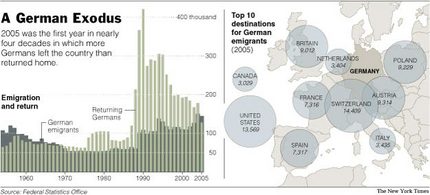The article excerpted below does a good job of sketching some of the effects of hyperinflation on the people of Zimbabwe. But it does little to illuminate the cause. As Milton Friedman definitively demonstrated, inflation is caused by government printing too much money. Mugabe and other tyrants are motivated to print too much money so they will have more money to spend, without having to raise taxes. The ploy seems to work for a little while sometimes, but in the end it results in inflation.
Gideon Gono is the governor of Zimbabwe’s central bank. Note Mr. Gono’s display of chutzpah in his blaming the people for inflation, and note the wonderful just symbolism of the power black out that cut off Mr. Gono’s speech.
(It almost sounds like an outtake from Atlas Shrugged.)
(p. A1) JOHANNESBURG, Feb. 6 — For close to seven years, Zimbabwe’s economy and quality of life have been in slow, uninterrupted decline. They are still declining this year, people there say, with one notable difference: the pace is no longer so slow.
Indeed, Zimbabwe’s economic descent has picked up so much speed that President Robert G. Mugabe, the nation’s leader for 27 years, is starting to lose support from parts of his own party.
In recent weeks, the national power authority has warned of a collapse of electrical service. A breakdown in water treatment has set off a new outbreak of cholera in the capital, Harare. All public services were cut off in Marondera, a regional capital of 50,000 in eastern Zimbabwe, after the city ran out of money to fix broken equipment. In Chitungwiza, just south of Harare, electricity is supplied only four days a week.
. . .
In the past eight months, “there’s been a huge collapse in living standards,” Iden Wetherell, the editor of the weekly newspaper Zimbabwe Independent said in a telephone interview, “and also a deterioration in the infrastructure — in standards of health care, in education. There’s a sort of sense that things are plunging.”
. . .
(p. A6) The trigger of this crisis — hyperinflation — reached an annual rate of 1,281 percent this month, and has been near or over 1,000 percent since last April. Hyperinflation has bankrupted the government, left 8 in 10 citizens destitute and decimated the country’s factories and farms.
. . .
The central bank’s latest response to these problems, announced this week, was to declare inflation illegal. From March 1 to June 30, anyone who raises prices or wages will be arrested and punished. Only a “firm social contract” to end corruption and restructure the economy will bring an end to the crisis, said the reserve bank governor, Gideon Gono.
The speech by Mr. Gono, a favorite of Mr. Mugabe, was broadcast nationally. In downtown Harare, the last half was blacked out by a power failure.
For the full story, see:
(Note: ellipses in original.)
For a lot of evidence on what causes inflation, see:
Friedman, Milton, and Anna Jacobson Schwartz. A Monetary History of the United States, 1867-1960. Princeton: Princeton University Press, 1963.





 Hallyday’s chalet in Gstaad, Switzerland. Source of photo:
Hallyday’s chalet in Gstaad, Switzerland. Source of photo: 
 Historian and libertarian Ralph Raico. Source of photo:
Historian and libertarian Ralph Raico. Source of photo:  Residential plastic pipe. Source of photo:
Residential plastic pipe. Source of photo:  Source of book image:
Source of book image: 
 Dr. John Snow. Source of photo: online version of the WSJ article cited above.
Dr. John Snow. Source of photo: online version of the WSJ article cited above. Edwin Chadwick. Source of photo: online version of the WSJ article cited above.
Edwin Chadwick. Source of photo: online version of the WSJ article cited above.